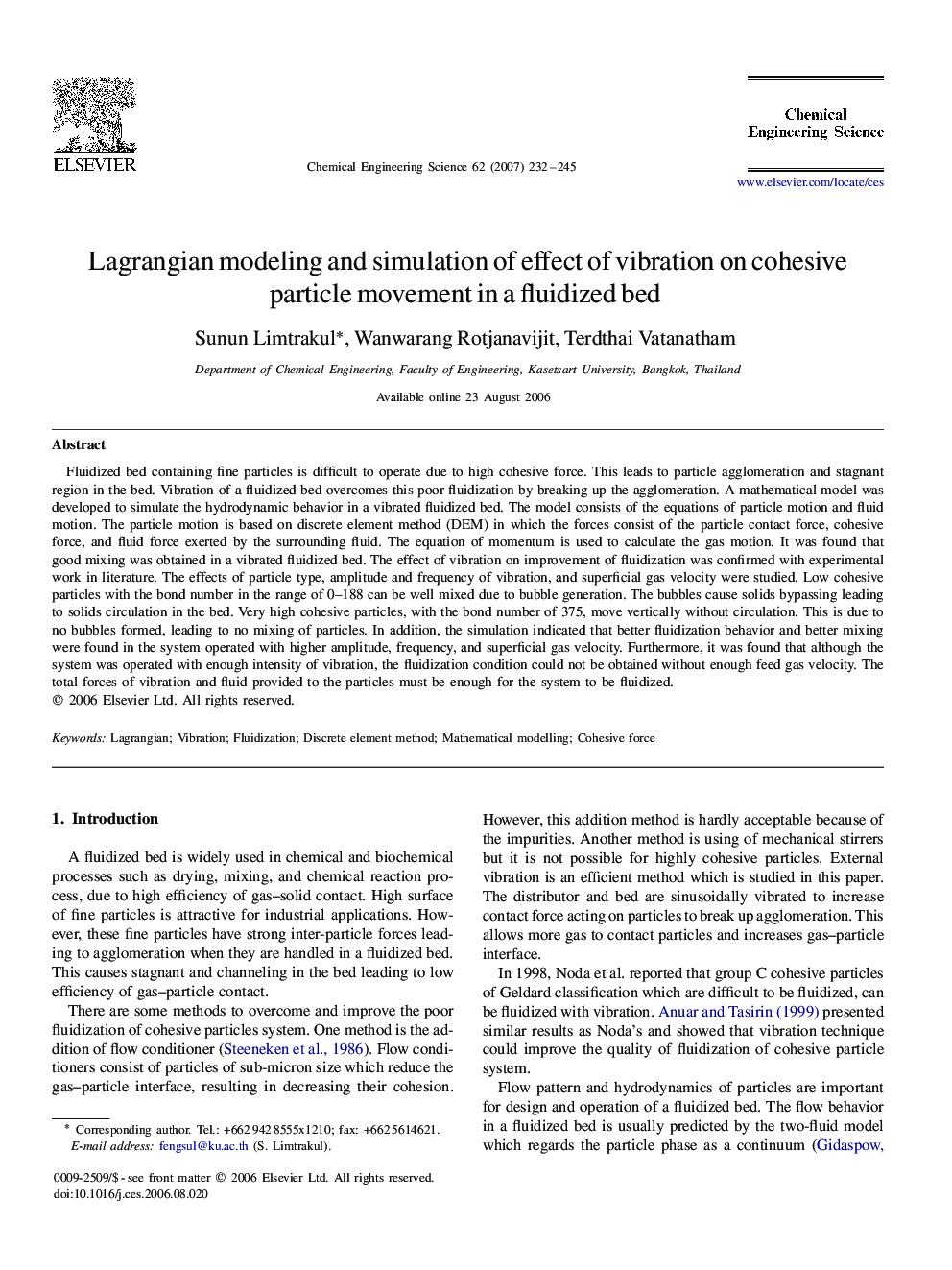| کد مقاله | کد نشریه | سال انتشار | مقاله انگلیسی | نسخه تمام متن |
|---|---|---|---|---|
| 160357 | 457075 | 2007 | 14 صفحه PDF | دانلود رایگان |

Fluidized bed containing fine particles is difficult to operate due to high cohesive force. This leads to particle agglomeration and stagnant region in the bed. Vibration of a fluidized bed overcomes this poor fluidization by breaking up the agglomeration. A mathematical model was developed to simulate the hydrodynamic behavior in a vibrated fluidized bed. The model consists of the equations of particle motion and fluid motion. The particle motion is based on discrete element method (DEM) in which the forces consist of the particle contact force, cohesive force, and fluid force exerted by the surrounding fluid. The equation of momentum is used to calculate the gas motion. It was found that good mixing was obtained in a vibrated fluidized bed. The effect of vibration on improvement of fluidization was confirmed with experimental work in literature. The effects of particle type, amplitude and frequency of vibration, and superficial gas velocity were studied. Low cohesive particles with the bond number in the range of 0–188 can be well mixed due to bubble generation. The bubbles cause solids bypassing leading to solids circulation in the bed. Very high cohesive particles, with the bond number of 375, move vertically without circulation. This is due to no bubbles formed, leading to no mixing of particles. In addition, the simulation indicated that better fluidization behavior and better mixing were found in the system operated with higher amplitude, frequency, and superficial gas velocity. Furthermore, it was found that although the system was operated with enough intensity of vibration, the fluidization condition could not be obtained without enough feed gas velocity. The total forces of vibration and fluid provided to the particles must be enough for the system to be fluidized.
Journal: Chemical Engineering Science - Volume 62, Issues 1–2, January 2007, Pages 232–245